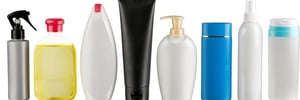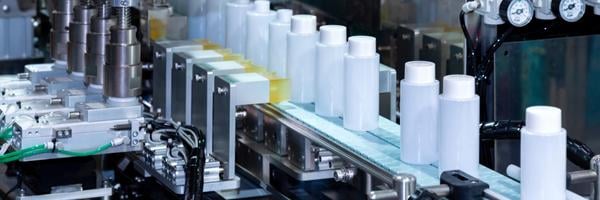Shampoo is a hair care product used to wash the scalp and hair. Shampoo products represent the largest segment of hair care cosmetics with a global market of close to $31 billion in 2021 (ScienceDirect). Shampoo products contain a combination of surfactants as the cleansing agents, as well as polymers and sodium chloride as rheological modifiers and are typically produced as a viscous liquid.

The shear and extensional viscosity of shampoo products predicts their flow behavior, the perceived “thickness”, foamability, and storage stability. Desired shampoo viscosity varies between consumers (male vs. female, adult vs. child, etc.), however typically non-Newtonian behavior is preferred. Consumers prefer shampoo that is “thick” in the palm of the hand such that it doesn’t flow away before application, but easy to squeeze out of the bottle and to lather onto scalp and hair at higher deformation rates. These situations call for higher viscosities for low- or no-shear rate situations. Another benefit of shampoos with higher viscosity at low deformation rates includes long-term storage stability.
The shampoo bottle filling process typically uses conveyors to transport empty bottles to “sensor-tracked wait positions”, which insert the dispensing nozzles into the bottles and automate liquid dispensing (Linear Motion Tips). In the container filling process, high extensional viscosities can cause strings of shampoo to spill over the bottle cap, leading to improper sealing. Dispensing from the bottle onto the palm of your hand may form similar strings of shampoo that can spill over the bottle cap and lead to product waste. Although slowing down the container filling speed can address the problem here, this will decrease throughput, which calls for more optimal design of shampoo formulations. Optimal formulation, especially as it applies to viscosity, can prevent shampoo spills, which will eliminate the cost of cleanup. A lower extensional viscosity decreases the lifetime of the shampoo strings and reduces the likelihood of spilling shampoo over the bottle cap.
Viscosity measurements can be used to inform on how to improve shampoo formulations for household and industrial container-filling applications. In our application note “Shampoo and surfactant solutions—Shear and extensional viscosity” shear rate sweeps and extensional rate sweeps are used to inform on how to formulate shampoo products more aligned to consumer preferences and optimal industrial container filling processes. We show results of shear rate and extensional rate sweeps on shampoo formulations prepared with multiple concentrations of anionic surfactant sodium dodecyl sulfate (SDS), nonionic polymer hydroxypropyl methylcellulose (HPMC), and sodium chloride (NaCl). We study formulations with multiple concentrations of SDS to account for dilution during the washing process. In addition, we explore how addition of NaCl affects viscosity. These results serve as a guide to better understand the surfactant and polymer interactions present in these systems.
Written by: Chrystian Ochoa, PhD, RheoSense Applications Scientist



